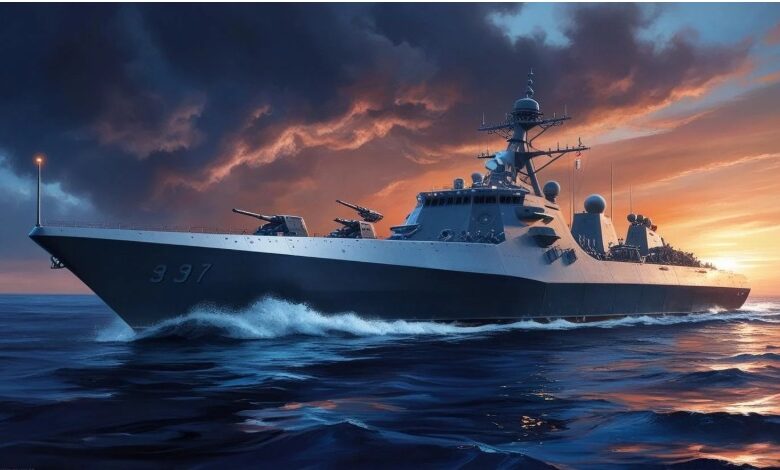Sailing into the Future: The New Era of Autonomous Naval Ships

The vast expanse of the ocean has long been a theater of innovation, power projection, and strategic warfare. Today, as nations vie for maritime supremacy, a silent revolution is taking place on the high seas—one that may redefine naval operations forever. The age of autonomous naval ships has arrived, signaling a transformative leap in military technology and maritime strategy.
The Emergence of Autonomous Naval Vessels
Autonomous naval ships, often referred to as unmanned surface vessels (USVs), are cutting-edge vessels capable of navigating, performing reconnaissance, and executing complex missions without onboard human crews. These AI-powered platforms integrate advanced sensors, machine learning algorithms, and real-time data analytics to make autonomous decisions while operating in a variety of naval theaters.
What sets these ships apart is not just their lack of human crew but their intelligence. They are designed to detect threats, navigate treacherous waters, and collaborate with manned vessels or other drones, all while minimizing human intervention. This technology is no longer speculative fiction—it is operational reality.
Nations like the United States, United Kingdom, China, and Russia are investing heavily in autonomous naval technologies. The U.S. Navy’s Ghost Fleet Overlord program, for example, has already demonstrated the capability of unmanned ships to perform long-range missions autonomously, traveling thousands of nautical miles with minimal human guidance.
Driving Forces Behind the Innovation
Several factors are driving the rapid development and adoption of autonomous naval technology:
- Safety and Risk Reduction: Autonomous ships remove human sailors from the most dangerous missions, such as mine-clearing operations or surveillance in hostile waters. By keeping personnel out of harm’s way, navies can reduce casualties and increase mission effectiveness.
- Cost Efficiency: Manned naval vessels require extensive life-support systems, crew quarters, and logistics. Unmanned ships are lighter, smaller, and cheaper to maintain and operate. This allows navies to deploy larger fleets at reduced cost.
- Operational Endurance: Human crews require rest, food, and medical support. Autonomous ships can operate continuously for weeks or even months, making them ideal for long-duration missions such as patrolling shipping lanes or monitoring vast maritime territories.
- Force Multiplication: When deployed alongside manned vessels, USVs act as force multipliers. They can scout ahead, provide real-time surveillance, or carry out electronic warfare, allowing crewed ships to focus on strategic command and control.
Breakthrough Technologies
Autonomous naval vessels rely on an array of advanced technologies:
- Artificial Intelligence and Machine Learning: These technologies enable ships to learn from past experiences, adapt to changing environments, and make decisions based on real-time data.
- Sensor Fusion: By combining data from radar, sonar, infrared, and satellite navigation, autonomous ships can form a comprehensive picture of their surroundings and act accordingly.
- Cybersecurity Protocols: Given the threat of cyberattacks, these ships are equipped with robust defensive measures to prevent hacking and data manipulation.
Benefits and Potential Applications
Autonomous ships are not just limited to combat roles. They have significant applications in:
- Surveillance and Reconnaissance: Monitoring maritime borders, detecting illegal fishing or smuggling, and tracking hostile movements.
- Search and Rescue: Operating in disaster zones or dangerous weather conditions where human crews might be at risk.
- Environmental Monitoring: Collecting oceanographic data, tracking pollution, and supporting climate research.
Risks and Ethical Concerns
Despite their advantages, autonomous naval ships raise critical ethical, legal, and strategic questions:
- Rules of Engagement: Can an AI system make life-and-death decisions in combat? Should it have the authority to engage targets autonomously?
- Accountability: In the event of a mistake or malfunction, who is held responsible—the software developer, the commanding officer, or the machine?
- Escalation of Conflict: The speed and autonomy of AI systems could lead to unintended confrontations or rapid escalation during tense situations.
Governments and international bodies are beginning to grapple with these questions. Some have called for global treaties to regulate the development and deployment of autonomous weapons, including naval systems.
The Road Ahead
As we look to the future, it’s clear that autonomous naval ships will play an increasingly vital role in maritime strategy. Rather than replacing human sailors entirely, these systems will likely serve in tandem with crewed ships, enhancing operational capabilities and enabling navies to adapt to the complex demands of modern warfare.
Innovation in autonomous maritime technology promises a safer, smarter, and more efficient future for naval operations. However, it also demands careful oversight, international cooperation, and ethical foresight to ensure that this new era at sea is both secure and responsible.
The sea has always challenged humanity to push the boundaries of technology. With autonomous ships now cutting through the waves, we are witnessing not just an evolution in naval warfare, but a revolution.



